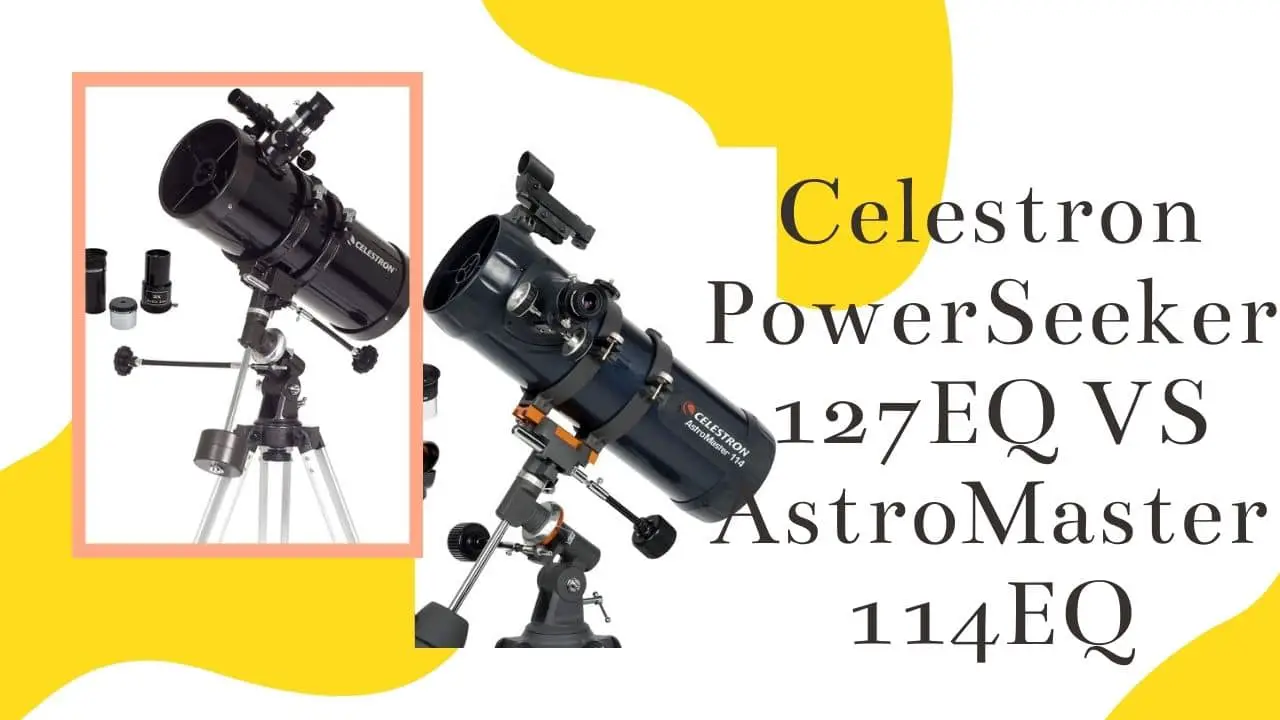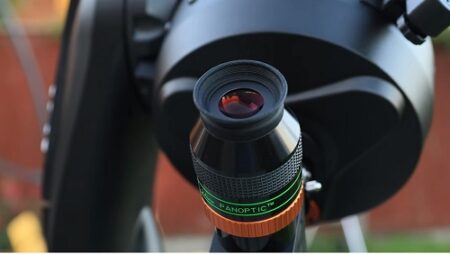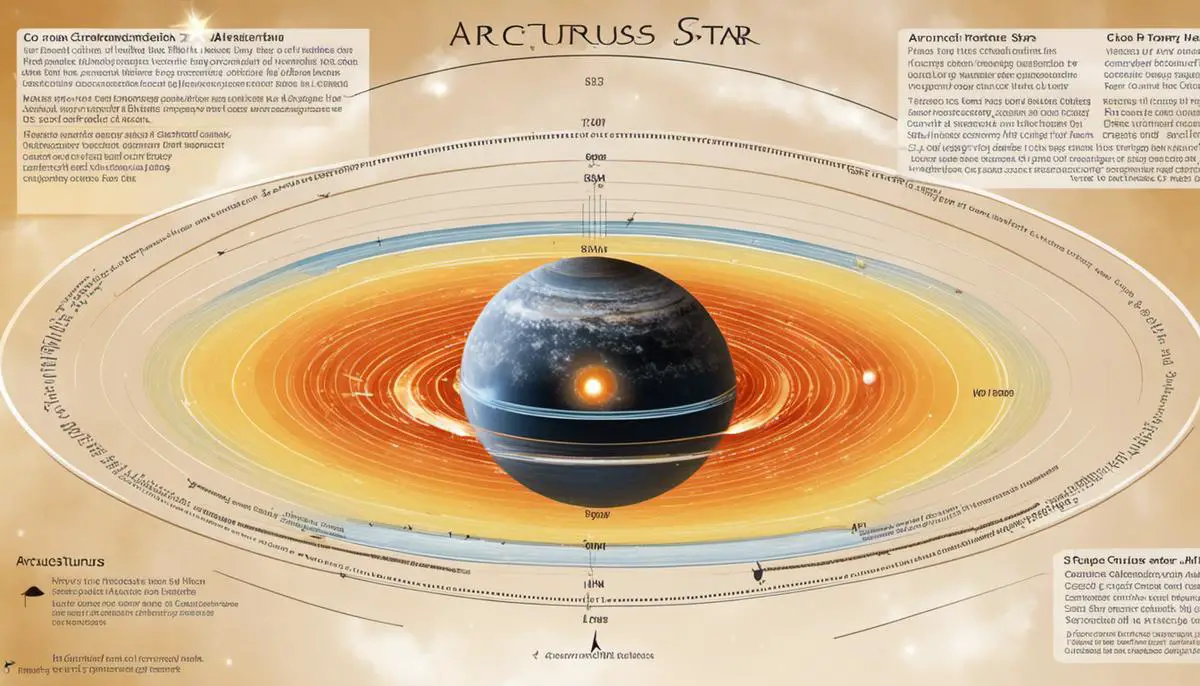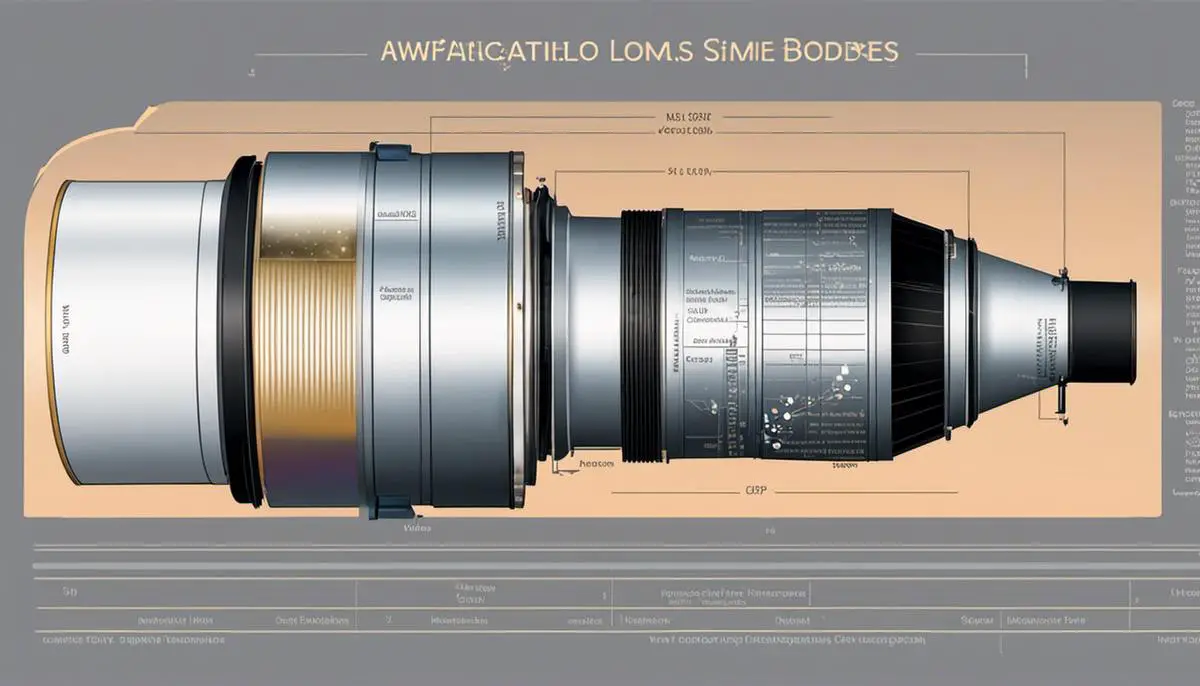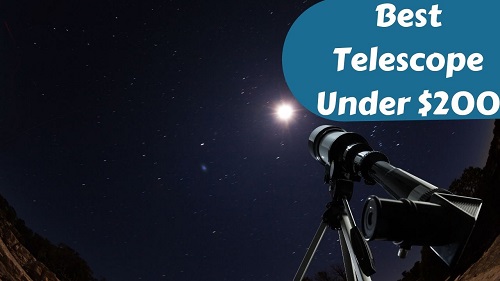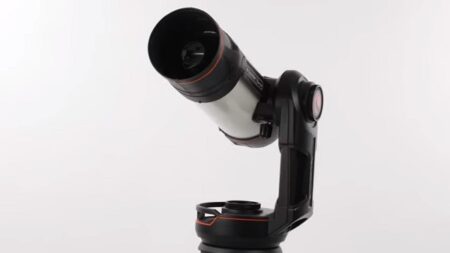A telescope has a lot to do with making memories for an amateur astronomy lover. But that thing does not come cheap.
And sometimes, your wallet may not accept paying the high price tag it comes for. But exploring the night sky can’t stop, right?
And so, you did your part of the research and came across two top-rated models. Those are somewhat budget-friendly and also promise pretty impressive features. We are talking about the PowerSeeker 127EQ as well as the AstroMaster 114EQ from Celestron.
At this point, you are finding it very hard to make your mind to buy one out of these two, as both are pretty amazing. Well, that’s when a comparison of Celestron PowerSeeker 127EQ vs AstroMaster 114EQ telescopes can help you.
Just like the one we’re about to conduct. Keep on Reading…
Celestron PowerSeeker 127EQ vs AstroMaster 114EQ :Comparison Table
| Feature | Celestron PowerSeeker 127EQ | Celestron AstroMaster 114EQ |
|---|---|---|
| Aperture | 127mm (5 inches) | 114mm (4.5 inches) |
| Focal Length | 1000mm | 1000mm |
| Focal Ratio | f/7.87 | f/8.77 |
| Mount Type | German Equatorial Mount | German Equatorial Mount |
| Tripod | Aluminum tripod with accessory tray | Aluminum tripod with accessory tray |
| Eyepieces | 20mm (50x) and 4mm (250x) | 20mm (50x) and 10mm (100x) |
| Finderscope | 5×24 finderscope | Built-in StarPointer finderscope |
| Barlow Lens | 3x Barlow Lens | Not included |
| Star Diagonal | 1.25″ star diagonal | 1.25″ star diagonal |
| Maximum Useful Magnification | 300x | 269x |
| Weight | 17.2 pounds (7.8 kilograms) | 20.3 pounds (9.2 kilograms) |
| Dimensions | 33 x 17 x 11 inches (83.8 x 43.2 x 27.9 cm) | 35 x 19 x 11 inches (88.9 x 48.3 x 27.9 cm) |
| Price | Check Here | Check Here |
One of our articles –Celestron Astromaster 130EQ vs PowerSeeker 127EQ.
A Bit About the Celestron PowerSeeker 127EQ
Do you wish to have some fun time exploring the night sky? And consider a basic focused telescope for that?
Then PowerSeeker 127EQ can be a fabulous one to go for. It comes with a potent mechanism, and also, the user-friendliness is excellent. Also, it’s very compact and pretty easy to set up. As there’s no tool, you’ll need it for the setup.
The PowerSeeker 127EQ will work very well for both kids and adults. It can be anyone who wants to experience the beautiful night sky within budget.
The 17 pounds weight is pretty much on the lighter side. And also, there are two years of warranty that you get to seal the deal.
A Bit About the Celestron AstroMaster 114EQ
People Love quality reflector telescopes as it’s been a pleasure for many to have the flexibility of a sharp view, a detailed view of many celestial objects.
Not to forget a setup that focuses mainly on beginners. Especially those who have very little idea of telescope matters.
One significant point about AstroMaster 114EQ is that it’s a powerful reflector telescope. And so, it can very well perform with Andromeda galaxy observing.
Also, the staff does a fantastic job for those who are more interested in viewing objects in the day time.
It’s a fantastic thing to bring on family camping events. As a result, kids can take the pleasure of a user-friendly telescope experience.
The setup is again easy enough. Hence kids can make that work. Just make sure there’s some adult supervision on them.
Let's Compare the Features of the Two Telescopes
At what point both these excellent telescopes start to take different roads? Finding that is the motive here.
And also, we’ll find out about their similar features. To keep this comparison complete and realistic.
Both Have Slightly Different Viewing Capabilities with German Equatorial Mounts
In terms of viewing celestial objects, the PowerSeeker 127EQ does a beautiful job. It starts well with providing very bright and clear enough images.
And its terrestrial object viewing capabilities during the daytime is also quite appraisable. But a bit less than the competitor AstroMaster 114EQ.
The objects that move in the night sky are pretty clear to view. Thanks to the inclusion of huge slow-Mo altitude control knobs. And this is due to the German equatorial mount, which is pretty strong.
You’ll enjoy the view of the moon as well as Saturn’s ring with it. Moreover, deeply diving into the magnificent Orion Nebula and other parts beyond the solar system is possible.
Now with the AstroMaster 114EQ also, you get a manual German Equatorial Mount. And there’s the slow-Mo altitude rod present. It takes charge of accurate pointing as well as smooth viewing.
There’s the cross knob available. It requires some tightening once the rod gets adjusted by you for a preferable position. And this makes the whole thing quite user-friendly.
There’s the manual mount flexibility with it. And so, precise adjustments as well as tracking night sky drifting objects are really up to the mark.
One of the main focal points of AstroMaster 114EQ is its 144mm primary mirror. It comes with full coating, by the way.
And thanks to that, it’s pretty simple to set up. Also, having a clear, detailed view of objects such as Jupiter’s Moon is possible. This fabulous telescope can help explore celestial objects, such as Open Start Cluster and more.
Eyepieces of Different Diameters
With the PowerSeeker 127EQ, there are two eyepieces. And the same number of eyepieces are included with the AstroMaster 114EQ. The total number of eyepieces may match. But their diameters are what makes a difference.
In PowerSeeker 127EQ, you’ll get to see a 20mm main eyepiece. And along with comes the other 4mm one. There’s a barlow lens to make things even better.
With the main eyepiece of PowerSeeker 127EQ, a 50 times magnification is possible. In comparison, the second one allows a magnificent 250x magnification capability.
With the Barlow lens, this combination does wonders. It enables reaching a wide range pretty easily.
Apart from this, the aperture optics is 127mm while the focal ratio is f/8. Also, the focal length is 1000. The last one is something similar to the AstroMaster 114EQ.
The 114EQ possesses two eyepieces again. The main one is a 20mm eyepiece. In contrast, there’s another 10mm eyepiece.
To make navigation and setup super simple, there’s also the presence of StarPointer red dot finder scope. The 10mm eyepieces are well capable of providing close magnification. The score is up to 100x.
And that means it’s slightly behind the PowerSeeker 127EQ in terms of magnification. But not a completely bad one at the same time.
With the 144mm aperture optics and the f/8.8 focal ratio, the telescope still does a great job. It’s terrific overall at viewing distant objects with clarity when both eyepieces work together.
Some credits of celestial object clarity also go to the parabolic mirror in 114EQ. The part is enormous. Also, the rack-and-pinion focuser does also play an important role here.
The mirror has a superior reflective aluminum coating. And so, the AstroMaster 114EQ is undoubtedly good at light transmission. Also, it gives better contrast results.
Different Dimensions and Weights Ensuring Compactness and Ease of Use
The PowerSeeker 127EQ comes in a compact and portable design. It’s something that can be bought into family picnics or camping sites. Also, it’s lightweight enough to fit inside your trip packing agenda.
That’s why many beginner sky observers like to carry it to places. Especially the spots that are known for having quite a dark sky at nighttime. Or the backyard will also do if you’d like to take the pleasure more often.
The overall viewing experience is stable. Thanks to its steel tube legs that are well made and don’t move from a place after setup. The accessory tray included will hold all the necessary side gears in one place.
This is to make the viewing disturbance-free. It comes in a 29.92 x 16.73 x 8.46 inches dimension with a weight of 21.38 lbs. That’s not too weighty or weird in shape.
But with AstroMaster 114EQ, the compactness is even better. This one comes with a dimension of 11.02 x 32.28 x 16.73 inches.
And a weight of only 17 lbs. So, for sure, you’re getting better usability in easy handling and quick setup with the 114EQ pick.
The frame is lightweight but not flimsy, by the way. The setup needs no particular tool to be done. And also, this telescope model provides an accessory tray. To keep the tool organization convenient.
Many Similar Accessories, but Only One Includes a Barlow Lens
Both the telescopes come with a couple of useful accessories to count in. A sturdy aluminum tripod, as well as a Barlow lens, comes with the PowerSeeker 127EQ.
While the AstroMaster 114EQ includes a tripod. There’s also a StarPointer red dot finder scope. However, there’s no Barlow lens.
That inclusion basically could have improved the eyepiece’s performance, as we get to see in the PowerSeeker 127EQ.
Celestron PowerSeeker 127EQ vs AstroMaster 114EQ – Which One is Better Overall?
And we have reached the end of this Celestron PowerSeeker 127EQ vs. AstroMaster 114EQ telescopes comparison piece. Time to make a choice!
Say, do you often dream of mysterious far-off galaxies, filled with sparkling stars and magnificent planets? The PowerSeeker 127EQ might just be your magic window to these celestial wonders!
Or maybe, you are an adventurous little astronaut, eager to pack your telescope and explore the night sky from different corners of your garden. In that case, the AstroMaster 114EQ would be your perfect sidekick!
Keeping in mind all of the goods and bad with both of these budget-friendly beginner telescopes, the PowerSeeker 127EQ seems like a tad bit superior option.
Imagine being able to view the craters of the moon in great detail. This is precisely what the PowerSeeker 127EQ lets you do, with its top-notch magnification abilities.
Moreover, it's cheaper too. So, with the PowerSeeker 127EQ, you are getting more sky-watching power for less pocket money. It's like winning a sweet deal!
And that is because of its better magnification offerings with the lower price concept. But that does not mean AstroMaster 114EQ horribly lacks since there’s still the flexibility of a finder scope. Something that isn’t available with PowerSeeker.
Imagine for a moment, dear reader, you're touring outer space from your garden with that lovely AstroMaster 114EQ. It's extremely light and you don’t break a sweat carrying it. Plus, you'll navigate the sky with its finder scope, your guide among the stars!
On the other hand, The PowerSeeker 127EQ is like having a massive magnifying glass that brings celestial beings right to your doorstep. The cost? Less than the AstroMaster! So, if you've got a tighter budget but a massive love for stargazing, the PowerSeeker 127EQ gets a big thumbs up.
Everything makes more sense when you let your personal presence and requirements play the role of determining which one to go for.
Think about the adventures! Open your eyes more with the PowerSeeker or move around with ease using the AstroMaster. It's your choice.
Never forget, both will do a splendid job! They'll help you explore the stars and make magical memories that last a lifetime.
So don’t hesitate!
It's time to start your own cosmic adventure. Each twinkle in the great, wide sky is a secret waiting to be revealed. Whether it's the dusty rings of Saturn, the fiery surface of Mars or the icy caps of Jupiter, the universe is yours to uncover. Every star in every constellation is a story waiting to be discovered. With a telescope like the Celestron PowerSeeker or the AstroMaster, these stories can become a part of your world.
Scanning the night sky can be a real treat even if you're doing it for the very first time. Like a veritable treasure hunt, the PowerSeeker or the AstroMaster will surely guide you to breathtaking views of the moon's craters or perhaps the vast expanse of the Milky Way.
Remember that every great astronomer, from Galileo to Hawking, started their journey much like you, looking up at the stars with wonder and curiosity. So embark on your journey, don't be afraid, because the sky is no longer the limit!
Related Questions
Can both the PowerSeeker 127EQ and AstroMaster 114EQ be used for astrophotography?
Yes, both telescopes can be used for astrophotography. However, it’s important to note that they are entry-level telescopes, so the results may vary. You might need additional accessories and experience to capture high-quality images.
Are the included eyepieces suitable for various magnifications?
Yes, both telescopes come with multiple eyepieces. The PowerSeeker 127EQ includes 20mm (50x) and 4mm (250x) eyepieces, while the AstroMaster 114EQ includes 20mm (50x) and 10mm (100x) eyepieces. These eyepieces provide different magnification levels, allowing you to observe a range of celestial objects.
Can these telescopes be used for viewing both terrestrial and celestial objects?
Yes, both telescopes can be used for viewing terrestrial objects during the day and celestial objects at night. However, you may need additional accessories, such as erecting prisms, to correct the orientation for terrestrial viewing.
Can these telescopes be easily transported?
Both telescopes are relatively portable, but the AstroMaster 114EQ is slightly heavier and larger compared to the PowerSeeker 127EQ. Considerations for transportation should include the weight and dimensions of the telescopes, especially if you plan to take them to different locations frequently.

I’m Ali. BestTelescopeReview.com is my little place on the web to express what I’ve learned first-hand, specially about the telescope part. I am writing these articles to share my love for astronomy with you.

